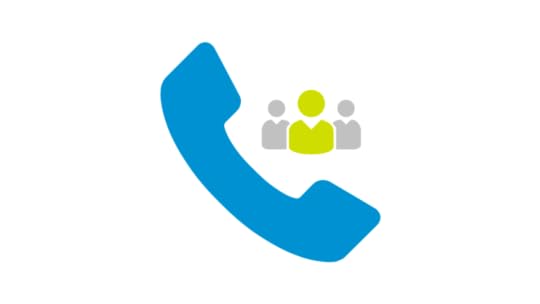The Essential Small Business Guide to Sales Lead Follow Up: How to Convert More Leads into More Orders in Less Time

The Essential SMB Guide to Sales Lead Follow Up: How to Convert More Leads into More Orders in Less Time
For the small or medium-sized business (SMB)
every inbound sales lead has the potential to become not only an order, but
also to transform itself into a satisfied customer that represents a dependable
stream of repeat revenue year after year.
The primary obstacle that stands between an
SMB and that repeat customer is the task of lead follow up. On the surface lead
follow up would appear to be quite straightforward but this simple step is
fraught with difficulties for most companies. Sales industry research estimates
that 40-50% of all inbound sales leads are never followed up. And, when the
leads are followed up, common mistakes are made that unwittingly doom the SMB
to lose the opportunity to convert that lead into an order.
Comprehensive and effective sales lead follow
up is built on the foundation of a commitment to rapidly respond to 100% of the
inbound leads received. In this book we outline simple steps that every SMB can
use to build their prospect pipelines and grow their sales without increasing
headcount. Including yours.
What is a Sales Lead?
To develop an effective lead follow up process
it is important to first understand what an inbound sales lead is. A sales lead
is simply a question. With their inquiry a potential prospect is asking you one
or more question(s). They could be general questions such as: What does your
product do? How does it do it? Will it do what I need? What does it cost? Or
they could be more complex questions: How will your solution integrate into my
current workflow? What productivity increase will we experience with your
solution?
In today’s competitive sales environment the
potential customer who has contacted your company about your product or service
has already completed at least 30% of the buying cycle without you. They’ve
spent considerable time online, researching your product and others like it,
and visiting your website and those of your competitors. By the time they first
contact you that prospect may have already gathered about 70-80% of the
information they need to make an informed decision to buy your product. They
are contacting you not out of idle curiosity but because they have an interest
and specific questions that need to be answered. They have a developed need.
And the first seller with the complete answers wins.
Here are the essential steps that every SMB
seller should take to be the first with the answers and maximize their
conversion of inbound sales leads into orders.

Step #1: Create a Lead Map
Sales lead follow up is a process. Before you
take any steps to fix and improve this process you need to make certain you
have a full understanding of your current sales lead follow up process. In all
my years of consulting with the CEOs of many small and medium sized businesses,
this is the first question I ask the client. “Draw your lead management process
for me.” Not once has the client been able to provide a 100% accurate rendering
of this vital process.
Check out the chart to the left to see an example
of what it means to map out a lead. For every type of lead you receive, map how
it is captured, recorded, and distributed to the salesperson that will follow
up with the prospect. Your map should also show how leads are distributed to
your indirect sales channels and how they are followed up, or aren’t.
Use your lead map to create a baseline
benchmark for your current sales lead follow up process. The critical items to
make sure you understand are how many hands a lead has to pass through before
it gets to the right salesperson and, most importantly, how much time passes
between the moment the lead was received and when the prospect receives a
follow up.
At one client I quizzed the CEO and sales team
about the exact number of new leads they received per week. They had no idea.
In fact, they were averaging about two new leads per salesperson per day. (Each
salesperson needed to close, on average, six orders per month to meet quota.)
At first, they didn’t believe me when I showed them they were each averaging 15
to 20 new leads per month. When I showed them the leads from the previous month
and asked what had happened to them, they defaulted to the standard sales
response: “Well, I looked at those leads but they were no good.”
Which brings us to the most important step of an effective Sales Lead Follow-up Program:

Step #2: Follow up 100% of Inbound Sales Leads
Every inbound sales lead is like a scratch-off
lottery ticket. You don’t know what you have until you scratch the wax off the
face of it and see if you have won. How many people buy a lottery ticket and
then wait until the next day to see if they have a winner? None. Inbound sales
leads should be treated the same way.
The opinions of sales industry researchers
vary, but the bottom line appears to be, across industry types, that roughly
50% of in-bound sales leads are never followed up. Let me say that again. 50%.
Each one is a potential winner. Just sitting there. Begging to be scratched
off. Does anyone believe that 50% of the scratcher lottery tickets sold last
year in the US, approximately $25 billion worth, are sitting around in a drawer
somewhere unscratched?
But sales leads have the same, if not better,
potential to pay off as lottery tickets. It’s a continuing mystery why so many
salespeople have such a negative and distorted view of sales leads. Sales leads
are found money. Someone has purchased a lottery ticket and is attempting to
hand it to you, but you turn your back.
This lack of follow-up means that at least 50%
of the dollars that the typical small or medium-sized business invests in lead
generation and building brand awareness is wasted. If the deal is that you, as
a CEO or marketing manager, invest marketing dollars to generate leads with the
understanding that your salespeople will follow them up to get orders, then one
of you is not holding up your end of the deal.
A
Basket of Cash: The Sales Math of Effective 100% Lead Follow up
Let’s break this down mathematically. Here is
a simple illustration of the power of 100% lead follow-up in Zero-Time. Let’s
assume that the average size of your typical customer order is $20,000. You get
20 in-bound sales leads per week, four per day. I’ll also assume that your
organization is average and estimate that your sales team follows up on 50% of
your leads. For purposes of illustration, let’s also say that your salespeople
convert 50% of your followed-up sales leads into qualified prospects and 50% of
those qualified prospects into orders. What does the math say? It says that you
are ignoring the easiest 100% sales growth you will ever find. Right now you’re
getting 2.5 orders out of every 20 leads, or $50,000 in new business. Assuming
the same conversion rate from prospects to orders, by following up 100% of your
sales leads in Zero Time you will produce five orders from those same 20 leads,
or $100,000 in new business. That’s an extra $50,000 in orders for the same
dollar investment in marketing and sales. Who doesn’t want more sales?
In
Sales, Ignorance is not Bliss
A friend of mine, JB, is a high-powered sales
consultant. He works with CEOs of companies of all sizes to help them turn
around their faltering sales organizations. He told me about one assignment he
had taken on recently with a previously high-flying $10 million-a-year company.
Growth was sputtering, so the CEO hired JB to analyze their sales processes and
help implement the necessary fixes. Within a week, JB had uncovered the source
of the company’s problems. He found a backlog of 1,800 sales leads, the vast
majority of which had never been followed up. The rest might have received some
follow-up but it had never been recorded in the client’s CRM system, which was
in place but not used. So no one knew for sure. Worst of all, the CEO and the
VP of sales were aware of the situation but had moved at less than glacial
speed to fix it.
This leads us to Step #3 in our Effective Sales Lead Follow-up process:

Step #3: Enter all Leads into your CRM system as soon as they are received
Make sure that all inbound sales leads are
entered into your CRM system as soon as they are received and that each one is
assigned to a salesperson for immediate follow up. Use your CRM system on a
daily basis to check and make sure that 100% of your sales leads are being
followed up. If you aren’t checking, it isn’t happening.
What should you do if you don’t have a CRM
system? Go buy one. Of course, you can devise a system for tracking leads that
doesn’t require a CRM system. But why would you? If you want to see a powerful
demonstration of how to use a CRM system as an effective sales tool, then look
no further. Improving your order yield from your pipeline of sales leads
provides the “R” in the ROI from your investment in a CRM system.
Don’t
Play the Waiting Game
I asked a client once about their lead
distribution and follow-up policies.
“We usually gather the leads up and distribute
them once a day.”
Why do you wait?
“I don’t know. It seems distracting to send
leads out to the salespeople as they come in. Both for me and the sales team.”
How can it be distracting to ask sales to do
their job, which is to sell product to potential customers?
“Well, since you put it that way.”
Let me ask you this question: What good
happens when you wait to follow up a lead? Does the potential customer become
more impressed with your responsiveness, or less? Does the lead wait to talk to
your competition until after you finally get around to calling?
Which takes us to Step #4 of the Effective
Sales Lead Follow-up process:

Step #4: Follow-up Immediately; If not Sooner
How much time should it take to follow up a
lead? Less than you think. Every minute that passes by while you wait to follow
up a lead is time that a competitor will use to swoop in and talk to the
prospect before you. If they respond to the customer with the answers to their
question, then you are suddenly fighting for 2nd place.
I helped a client streamline their sales lead
follow up process to reduce their response time to inbound sales leads from 24
hours to 30 minutes. The immediate result was more qualified prospects in their
pipeline. The longer-term result was a doubling of their sales with the same
number of salespeople.
Your goal should be for the prospect to feel
like they had just hit the “enter” button on their computer when your
salesperson calls to follow-up. The first one in the door who is completely
responsive to the prospect’s needs will set the bar for all the other
competitors, which means that you will have dramatically improved your odds of
getting the order.
How much time should it take for your sales
team to follow-up a lead? Thirty (30) minutes max. (Sound too fast? Contact me
at andy@zerotimeselling.com. I will show you how to make this happen.)
Competition
Killer
Sam was selling big numbers as it was. But
when my client Manny, his boss, rolled out an aggressive lead follow-up process
Sam found that being completely responsive to leads within 30 minutes pushed
his sales into overdrive. Quick responses elicited more immediate questions and
information from the prospects. If they sent a lead in, then they were de facto
interested. Call them back immediately and the level of interest went up.
Responsiveness captured the attention of his prospects and differentiated Sam
from the competition. Absolute responsiveness, completely meeting the
prospect’s information requirements in Zero-Time was a competition-killer.
If the customer already has the bulk of the
information they need to make a decision before they even call you, and you
promptly and thoroughly answer all of their additional questions in the first
sales call, you’ve gone a long way toward winning the order.
Which leads to Step #5 of this Simple but
Effective Sales Lead Follow-up method:

Step #5: Provide Complete Answers Quickly
As discussed above an inbound sales lead is
nothing more than a question. Being responsive to a prospect means that you are
providing a complete answer to their question(s) in the least time possible.
The best way to do this is to position your deepest product knowledge closest
to the customer.
It is not enough to be the first to respond to
the customer. You must also be the first to answer their questions. Manny and
Sam learned that during the buying cycle the customer is not only judging your
product. Perhaps more important, they are evaluating what it will be like to
work with your company.
Responsiveness, understanding, and
completeness all build trust and corporate credibility that lead to orders. The
first seller to respond to an inbound sales lead with the complete answer in
Zero-Time will dramatically increase their chances of winning the order.
Your
Sales Processes are Not Static
Once Reuben’s sales team bought into the
benefits of following up with 100% of their sales leads, they became noticeably
less skeptical about the value of the leads they were receiving. At that point
Reuben’s team was following up on 100% of their sales leads but was taking two
or three days to call the prospect. They discovered that one of their main
competitors was beating them to the punch with nearly every prospect. Clearly,
two or three days were too long to take to follow up on new opportunities.
Reuben’s sales team decided to step it up a
notch. Faster lead follow-up would give them an advantage with the prospect.
They collectively decided to tweak their process to ensure sales leads were
followed up on the same day they were received. They further refined their lead
system so that all the leads received overnight were entered in the CRM system
and distributed to the sales team by 9 a.m., and all leads received in the
morning were distributed by noon. Every member of the sales team quickly began
to see the benefits of responsive lead follow up on leads and they turned the
tables on their competition. Now Reuben’s team became the first company to
follow up with a sales lead, and combined with 100% lead follow-up, drove even
more prospects into their sales pipeline. Over time and with additional
refinement to their sales processes, they reached the goal of 30-minute lead
follow-up.
Which leaves us at Step #6 of the Essential
Sales Lead Follow-up process:

Step #6: Measure, Improve, Measure Again
You must continually work to improve your
sales lead follow up process. As the old saying goes ‘You can’t improve what
you don’t measure.’ So keep it simple to start with and measure the following:
a) How many sales leads do you receive each
week?
b) How long does it take to respond to each
sales lead? (the time between when the lead is received and a sales person
talks to them for the first time)
c) What percentage of your inbound sales leads
are converted into qualified prospects?
d) What percentage of your inbound sales leads
are converted into orders?
Set goals for these metrics a-d (above) and
then check each month to see if you are achieving them. If you are, set new
more aggressive goals and fine-tune each element of your lead follow up process
to achieve the new goal. If you aren’t meeting your goals, examine each element
of your process in detail and implement steps you can take to improve it. Then
check your performance again in a month.
Art
Lesson
Art owned a family business that had been
around for about four decades. His had an objective to grow his top line by
10%. His first thought was that he would have to boost his spending on
advertising to create more demand and generate leads, but he was naturally
worried that increasing his marketing outlays would not result in more sales.
I spent time with Art’s sales team, reviewing
their processes and their accounts. It was no surprise to find that they
weren’t paying attention to sales leads. I pointed this out to Art and told him
that he didn’t need to increase his advertising budget. He just needed to make
sure that all his leads were promptly pursued.
Art wanted to increase the percentage of leads
that were followed up by 50%. My response was that there was no need for half
steps and that we were going to ensure that 100% of all leads were followed up.
It was an easy fix. All in-bound leads were routed to Art’s sales admin, who
entered the account into the company’s CRM system and assigned it to a
salesperson to follow up on. Each night before he left work Art reviewed the
list of leads and open follow-ups by each salesperson to ensure that the
assigned leads had been followed up.
What Art found initially was fairly
predictable. The good performers followed up on all of their leads. The chronic
middlers and underachievers didn’t. (It is not a coincidence that industry
research estimates both that only 50% of leads are followed up and that only
50% of salespeople achieve their annual quotas.) Art met with his middlers and
underachievers and told them it was a non-negotiable condition of their
continued employment that they follow up all their leads.
Perhaps not surprisingly, the entire team
began following up on 100% of their leads. One positive result was that the
middlers and underachievers developed more prospects and closed more orders.
They still weren’t all-stars, but they had closed the gap. And total company
sales rose as a result.
Making it Happen: Management Action Items
The next steps are up
to you. While it takes management commitment and follow-through to implement an
effective sales lead follow-up program this is also the easiest of the
Zero-Time Selling solutions to implement because the results are so simple to
measure. Either you’re following up on 100% of your sales leads or you aren’t.
Here are the six
action items to take today to begin following up on 100% of your sales leads:
1. Map your lead handling process.
Check out the chart
again on Page 4 to see an example of what it means to map out a lead. For every
type of lead you receive, map how it is captured, recorded, and distributed to
the salesperson that will follow up with the prospect. Your map should also
show how leads are distributed to your indirect sales channels and how they are
followed up, or aren’t.
2. Capture all your leads in your CRM system as soon as they come in.
Every sales lead that
you receive, regardless of source, has to be immediately entered into your CRM
system with a follow-up action assigned to a salesperson.
I had this discussion
with JG, a client’s VP of Sales.
“Enter every one of
them?”
Absolutely.
“Even the bad ones?”
What is a bad lead?
Can you tell me?
“I can tell just by
looking.”
Really? Are you 100%
sure that you are not passing up a valid sales opportunity each time you flush
a lead down the drain without talking to it first?
“Well, no…not 100%.”
So, how many orders,
how many thousands of dollars, have you handed over to your competition during
your career because you didn’t follow up on every lead?
“Umm…”
Just what I thought.
3. Immediately distribute all your sales leads after you’ve entered them
in your CRM system.
Don’t wait until you
have a certain number of leads; don’t gather them all up and enter them once a
day. If you do, you’ll lose valuable time, you won’t be responsive to the
customer, and you’ll open the door for your competition. You will need to
designate someone—yourself, a sales admin, or a receptionist—to enter every
lead into your system. It doesn’t matter who does it. What is crucial is that
it becomes someone’s responsibility.
Who is that person in
your company? Enter the name right here: ____________________________________.
Now, send that person an email and ask him or her to come talk with you about
the important role they have to play in your sales success.
4. Assign follow-up action items to a salesperson for each lead that is
entered into your CRM system.
A specific
salesperson needs to be assigned to follow up on each lead. Salespeople have to
understand that, effective immediately, following up on leads is compulsory. It
is a condition of employment.
This is a very simple
bargain between management and salespeople. Management will invest in lead
generation. All the salespeople have to do is follow up on the leads that are
generated. It’s pretty simple.
5. Daily checks by management to ensure that leads are promptly followed-up.
This is essential. It
is now up to you, as the CEO or sales manager, to check your CRM system at the
end of every workday to ensure that all of the assigned lead follow-ups took
place.
As I like to tell me
clients: If you aren’t checking, then it isn’t happening. The follow-up and
spot-checking really doesn’t take very long. And I guarantee you’ll see
results.
6. Write up the 100% lead follow-up process as a standard sales policy and
then distribute it to everyone on your sales team.
The policy must
stipulate the following points:
·
100% of all sales leads will be promptly followed
up.
·
Prompt and universal lead follow-up is a condition
of employment.
·
All leads will be immediately entered into your CRM
system and assigned to a sales person for prompt follow-up.
·
Management will monitor lead follow-up daily.
It’s Time To Make Some Changes
By following up and effectively managing 100
percent of your sales leads, every day, a small business can go a long way
toward not only developing additional sales, but creating a strong, loyal
customer base as well. Disciplined and
comprehensive sales lead follow up is the simplest way to improve the ROI on
your sales and marketing dollars.
It’s simple, logical selling that’s easy for
even the most novice business owners to manage: either you’re following up with
a 100 percent of your leads or you’re not.
Use this book to make it happen for you.
The post The Essential Small Business Guide to Sales Lead Follow Up: How to Convert More Leads into More Orders in Less Time appeared first on Andy Paul.
Andy Paul's Blog
- Andy Paul's profile
- 4 followers



